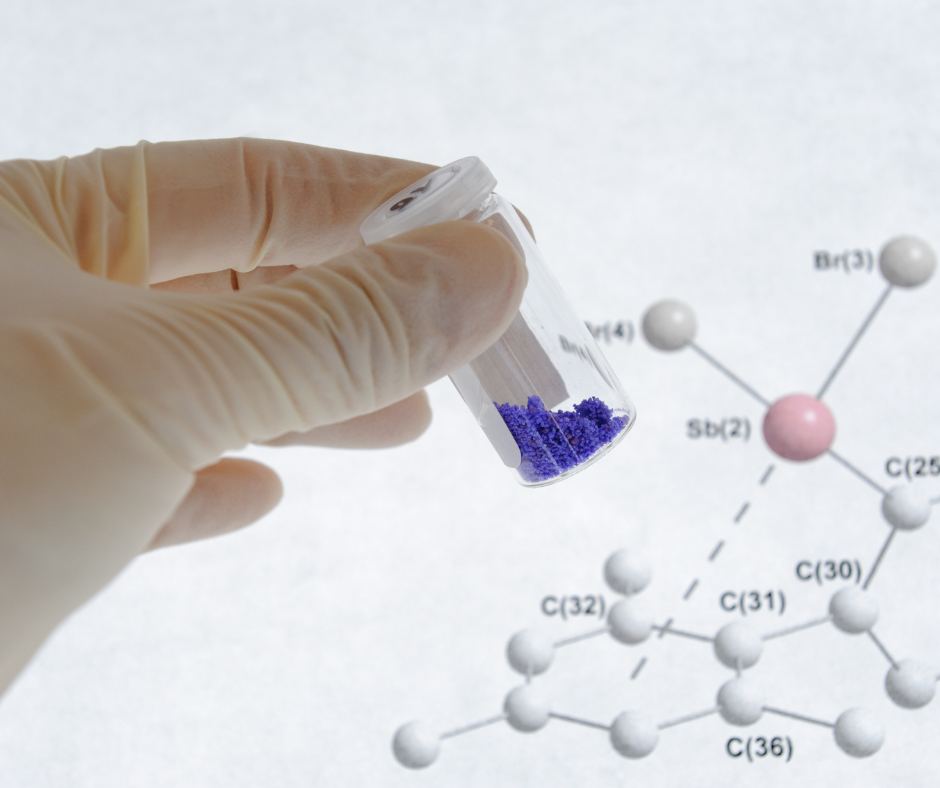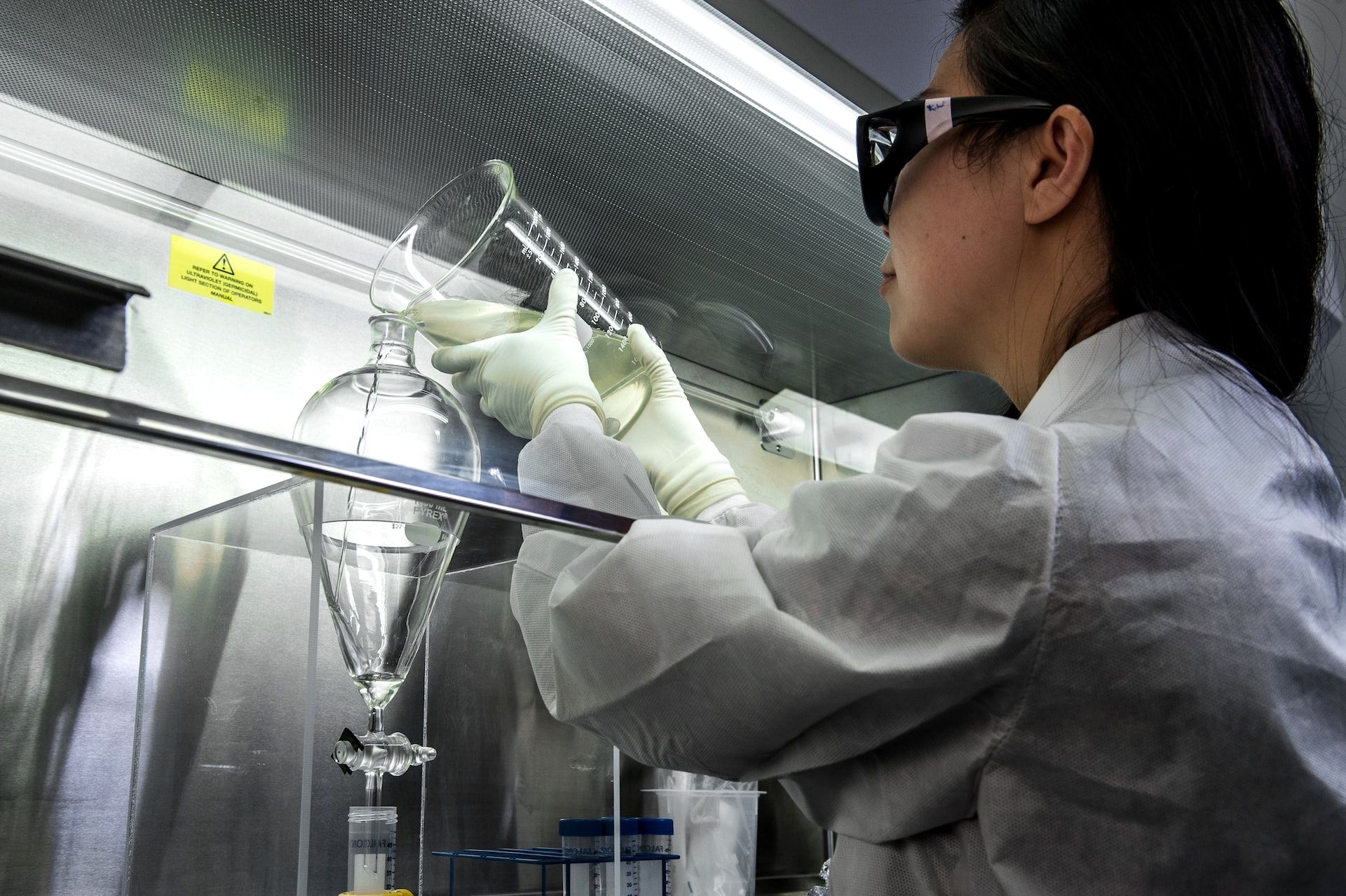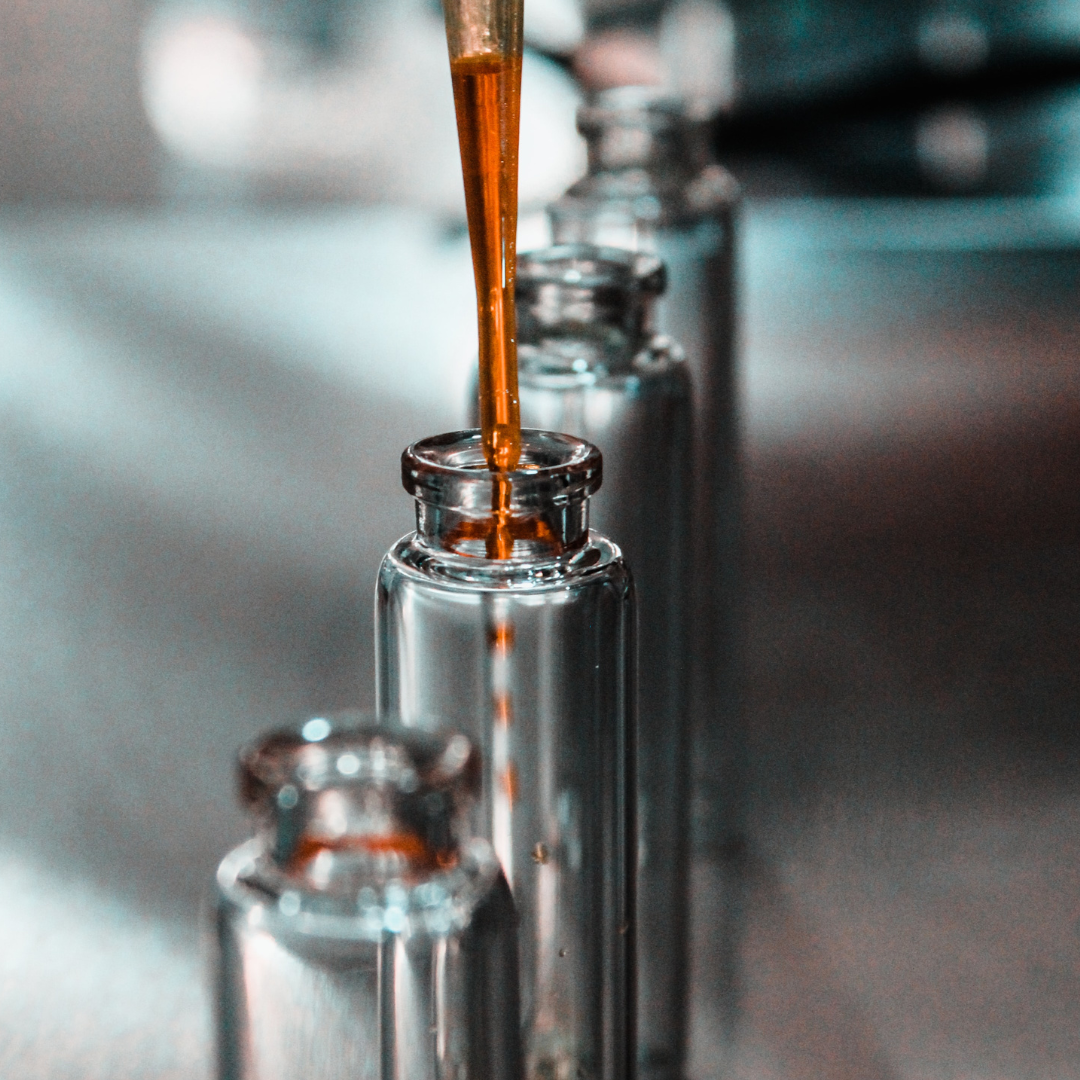Chemical raw materials are an essential part of industrial production. They help to produce a variety of products, including pharmaceuticals, cosmetics, and pesticides. In order to ensure that the raw materials chosen for industrial use are of high quality, it is important to understand the different qualities that are important.
Quality chemical raw materials play an important role in many industries. They are used to produce a wide range of products, including pharmaceuticals, cosmetics, and pesticides. It is important to select high-quality raw materials in order to ensure the production of reliable products.
This article will provide an in-depth look at the key factors to consider when looking for quality chemical raw materials. The article will cover critical aspects such as the purity of the raw material, the source of the raw material, the supplier's reputation, analytical testing, quality control, and regulatory compliance.
By taking these factors into account, businesses can ensure that they are using high-quality raw materials that meet the required standards and are safe for use. This article will provide valuable insights to manufacturers, suppliers, and consumers looking to buy chemical raw materials.
Let’s take a look at the table of content before we dive in:
- Importance of Quality Chemical Raw Materials
- (I) Key Factors to Consider When Looking for Quality Chemical Raw Materials
- (II) Purity
- (III) Source
- (IV) Supplier Reputation
- (V) Analytical Testing
- (VI) Quality Control
- (VII) Regulatory Compliance
- (VIII) Conclusion
- How Deskera Can Assist You?
Let's get started!
Importance of Quality Chemical Raw Materials
The importance of using quality chemical raw materials cannot be overstated. Chemical raw materials are the foundation of many industries, including pharmaceuticals, cosmetics, food, and beverages. The quality of the raw material used can have a significant impact on the final product's safety, efficacy, and overall quality.
Using high-quality chemical raw materials ensures that the final product meets the required standards and is safe for use. For instance, in the pharmaceutical industry, using impure or low-quality raw materials can lead to the production of substandard drugs that may pose health risks to patients.
In the cosmetics industry, using low-quality raw materials can lead to the production of products that cause skin irritation or other adverse reactions. Similarly, in the food industry, using contaminated or low-quality raw materials can lead to the production of food products that may cause illness or foodborne diseases.
Using high-quality raw materials can also help to protect a company's reputation. Companies that consistently produce high-quality products using quality raw materials are more likely to build a loyal customer base and positive brand image. Additionally, using quality raw materials can lead to cost savings in the long run by reducing the need for product recalls and legal liabilities.
All in all, using quality chemical raw materials is essential for producing safe, effective, and high-quality products. Using low-quality or contaminated raw materials can pose health and safety risks, damage a company's reputation, and lead to financial losses.
(I) Key Factors to Consider When Looking for Quality Chemical Raw Materials
When looking for quality chemical raw materials, there are several key factors that one should consider, including:
Purity:
The purity of the raw material is crucial to ensure the safety and efficacy of the final product. It is important to ensure that the raw material is free from impurities and meets the required purity standards.
Source:
Knowing the source of the raw material is important to ensure that it is obtained from a reliable and reputable supplier. Factors to consider when evaluating the source include the supplier's reputation, their manufacturing practices, and any certifications or accreditations they hold.
Supplier Reputation:
The reputation of the supplier is important as it reflects the quality of the raw materials they supply. It is essential to work with reputable suppliers who have a track record of providing high-quality raw materials.
Analytical Testing:
Analytical testing is critical to ensure the quality and purity of the raw material. It is important to ensure that the supplier conducts regular analytical testing to validate the purity of the raw material.
Quality Concern:
The supplier's quality control system is important to ensure that the raw material meets the required standards. A robust quality control system should include checks and balances at every stage of the manufacturing process.
Regulatory Adherence:
The raw material supplier should comply with relevant regulations to ensure that the raw material is safe and meets the required standards. It is important to ensure that the supplier adheres to relevant regulations such as Good Manufacturing Practices (GMP) and Hazard Analysis and Critical Control Points (HACCP).
By considering these factors when looking for quality chemical raw materials, businesses can ensure that they are using high-quality raw materials that meet the required standards and are safe for use.
(II) Purity
The purity of the chemical raw material is one of the most important factors to consider. The higher the purity, the better the quality of the material. Purity refers to the absence of any impurities or contaminants in the raw material.
The presence of impurities can affect the quality of the final product and may also lead to health and safety concerns. It is important to ensure that the chemical raw material meets the required purity standards for the intended use.
Importance of Purity
The purity of the chemical raw material is crucial for ensuring the safety and efficacy of the final product. Purity refers to the absence of impurities in the raw material, which can be harmful to the consumer or impact the quality of the product.
Using impure raw materials can lead to the production of substandard products that may pose health and safety risks, damage a company's reputation, and lead to financial losses.
In the pharmaceutical industry, for example, the purity of raw materials is critical to ensure that drugs are safe and effective. The presence of impurities in a drug can reduce its efficacy or lead to adverse reactions in patients. Similarly, in the food industry, using contaminated raw materials can lead to the production of food products that may cause illness or foodborne diseases.
Ensuring the purity of the raw material requires strict quality control measures at every stage of the manufacturing process. These measures include screening the raw material for impurities, conducting regular analytical testing, and adhering to strict manufacturing processes. Regular analytical testing is critical to ensure that the raw material meets the required purity standards and is free from impurities.
Therefore, the purity of chemical raw materials is critical to ensuring the safety and efficacy of the final product. It is essential to ensure that the raw material is free from impurities and meets the required purity standards.
By doing so, businesses can produce safe, high-quality products that meet the required standards and protect their reputation.
Factors that Can Affect Purity
There are several factors that can affect the purity of chemical raw materials. Understanding these factors is crucial to ensure that the raw material meets the required purity standards and is free from impurities. Some of the key factors that can affect the purity of chemical raw materials include:
Manufacturing processes: The manufacturing processes used to produce the raw material can impact its purity. If the manufacturing processes are not well-controlled or monitored, they can introduce impurities into the raw material.
Raw material source: The source of the raw material can impact its purity. If the raw material is obtained from a contaminated source, it may contain impurities that can affect the quality and safety of the final product.
Storage conditions: The storage conditions of the raw material can impact its purity. If the raw material is not stored properly, it may be exposed to contaminants that can impact its purity.
Handling practices: The handling practices used during the transportation and storage of the raw material can impact its purity. If the raw material is mishandled, it may be exposed to contaminants that can affect its purity.
Cross-contamination: Cross-contamination can occur if the raw material comes into contact with other materials or equipment that may introduce impurities. This can happen during transportation, storage, or manufacturing processes.
Analytical testing: Analytical testing is critical to ensuring the purity of the raw material. If the analytical testing is not conducted properly, it may not detect impurities that can affect the quality and safety of the final product.
Ultimately, several factors can impact the purity of chemical raw materials. It is important to understand these factors and implement strict quality control measures to ensure that the raw material meets the required purity standards and is free from impurities. By doing so, businesses can produce safe, high-quality products that meet the required standards and protect their reputation.
Required Purity Standards
The required purity standards of chemical raw materials vary depending on the intended use of the raw material and the industry in which it is used. In general, the purity standards of chemical raw materials are determined by regulatory bodies or industry standards organizations.
For example, in the pharmaceutical industry, the United States Pharmacopeia (USP) sets standards for the purity of raw materials used in the production of drugs. The USP monographs provide specific tests and acceptance criteria for the purity of various chemical raw materials.
Similarly, in the food industry, the Food Chemicals Codex (FCC) provides standards for the purity and quality of food additives and ingredients. The FCC sets standards for purity, identity, strength, and composition of food additives and ingredients.
In addition to industry-specific standards, many countries have regulatory bodies that set purity standards for chemical raw materials.
For example, the United States Environmental Protection Agency (EPA) sets purity standards for chemicals used in pesticides, while the European Chemicals Agency (ECHA) sets purity standards for chemicals used in the European Union.
The purity standards of chemical raw materials are typically expressed as a percentage or as parts per million (ppm). For example, the USP may set a purity standard of 99.5% for a particular chemical raw material, meaning that the raw material must contain no more than 0.5% impurities.
The required purity standards of chemical raw materials vary depending on the intended use of the raw material and the industry in which it is used. These standards are typically set by regulatory bodies or industry standards organizations and are expressed as a percentage or ppm.
By adhering to these standards, businesses can ensure that the raw material meets the required purity standards and is safe for use.
(III) Source
The source of the chemical raw material is another important factor to consider. It is important to know where the raw material comes from and whether it is produced under safe and ethical conditions. For instance, raw materials sourced from countries with poor environmental regulations or poor working conditions may be of lower quality and may also pose health and safety risks.
A. Importance of knowing the source of the raw material
Knowing the source of chemical raw materials is important for ensuring the quality, safety, and efficacy of finished products. The following are the importance of knowing the source of chemical raw materials in detail:
1.Knowing the source of chemical raw materials allows manufacturers to ensure consistent quality in their products. By understanding the source of the raw materials, manufacturers can ensure that they are receiving raw materials of a consistent quality and purity.
2. Knowing the source of chemical raw materials can help ensure that the raw materials are free from harmful impurities, contaminants, and toxic substances. This can help ensure the safety of the final product and protect public health.
3. Knowing the source of chemical raw materials can help ensure compliance with regulatory standards and guidelines. Manufacturers must ensure that the raw materials they use comply with relevant regulations to avoid legal and financial penalties, damage to reputation, and loss of customer trust.
4. Knowing the source of chemical raw materials provides a record of the raw materials' origin, allowing for greater traceability. In the event of a recall, manufacturers can quickly identify the source of the raw materials and limit the scope of the recall.
5. Knowing the source of chemical raw materials can help manufacturers make more sustainable choices. By understanding the environmental impact of the raw materials, they use, manufacturers can make more environmentally friendly choices, reducing their carbon footprint and contributing to sustainability efforts.
6. Knowing the source of chemical raw materials can help ensure business continuity. By understanding the reliability of their suppliers, manufacturers can mitigate the risk of supply chain disruptions and ensure that they can continue to produce their products.
B. Factors to consider when evaluating the source of the raw material
When evaluating the source of chemical raw materials, the following factors should be considered:
Quality: The quality of the raw material is a crucial factor to consider. The supplier should be able to provide information about the quality control processes they use to ensure consistent quality and purity of the raw material.
Consistency: This of the supplier is an important consideration. The supplier should have a track record of delivering raw materials on time, meeting specifications, and having a stable supply chain.
Compliance: Compliance with regulatory standards and guidelines is a critical factor to consider. The supplier should have relevant certifications, permits, and licenses to ensure compliance with local, national, and international regulations.
Traceability: Traceability of the raw material is an essential factor to consider. The supplier should be able to provide information about the origin of the raw material, including the location and the date of manufacture.
Environmental Impact: The environmental impact of the raw material should be considered. Suppliers should have an environmental policy that ensures the sustainable sourcing and production of raw materials, reducing their carbon footprint and contributing to sustainability efforts.
Charges: The cost of the raw material is an important consideration. Suppliers should provide competitive pricing for raw materials without compromising quality and compliance with regulatory standards.
Supplier Image: The reputation of the supplier is an important factor to consider. The supplier should have a positive reputation within the industry and be known for their reliability, quality, and compliance with regulatory standards.
Communication: Effective communication between the supplier and the manufacturer is essential. The supplier should have clear communication channels and be responsive to inquiries, orders, and concerns.
C. Risks of using raw materials from unreliable sources
Using chemical raw materials from unreliable sources can pose significant risks to the quality, safety, and efficacy of finished products. The following are the risks of using chemical raw materials from unreliable sources:
1.Unreliable sources may not have robust quality control processes in place, leading to inconsistencies in the quality of chemical raw materials. The use of low-quality or inconsistent raw materials can result in the production of substandard or defective products.
2. Unreliable sources may supply chemical raw materials that are contaminated or contain harmful impurities. The use of contaminated raw materials can pose a significant risk to public health and safety, leading to product recalls, legal and financial penalties, damage to reputation, and loss of customer trust.
3. Unreliable sources may not comply with regulatory standards and guidelines, exposing manufacturers to legal and financial penalties. The use of non-compliant raw materials can result in product recalls, damage to reputation, and loss of customer trust.
4. Unreliable sources may not deliver chemical raw materials on time, causing delays in production schedules and affecting business continuity. The inability to meet production deadlines can result in the loss of customers and revenue.
5. The use of chemical raw materials from unreliable sources can be costly. The need to remediate or discard substandard or defective products can result in additional expenses. The use of non-compliant raw materials can lead to legal and financial penalties, negatively impacting a company's bottom line.
6. The use of chemical raw materials from unreliable sources can damage a company's reputation, leading to a loss of customer trust and loyalty. The cost of rebuilding a damaged reputation can be significant.
All in all, the use of chemical raw materials from unreliable sources can pose significant risks to the quality, safety, and efficacy of finished products. It can impact quality control, safety, compliance with regulatory standards, timeliness, cost, and reputation. Choosing reputable suppliers and ensuring that chemical raw materials meet required regulatory standards and guidelines can minimize risks and ensure the production of safe, high-quality products.
IV. Supplier Reputation
The reputation of the supplier is also an important consideration when looking for quality chemical raw materials. A reputable supplier will have a proven track record of supplying high-quality raw materials that meet the required standards. It is important to do some research on the supplier and read reviews from other customers before making a purchase.
A. Importance of Supplier Reputation
The reputation of suppliers for chemical raw materials is essential in ensuring the quality, safety, and efficacy of finished products. The following are the importance of supplier reputation for chemical raw materials in detail:
1.Suppliers with a good reputation are more likely to have robust quality control processes in place, ensuring that their chemical raw materials are of consistent high quality. Choosing reputable suppliers minimizes the risk of receiving sub-standard or contaminated raw materials that can affect product quality.
2. Reputable suppliers are more likely to comply with regulatory standards and guidelines. Choosing suppliers with a good reputation minimizes the risk of receiving non-compliant raw materials that can result in legal and financial penalties, damage to reputation, and loss of customer trust.
3. Choosing reputable suppliers who prioritize safety in their manufacturing processes ensures that chemical raw materials are free from harmful impurities, contaminants, and toxic substances. This ensures that the final products made from these raw materials are safe for consumer use.
4. Reputable suppliers are more likely to deliver chemical raw materials on time, ensuring that production schedules are met, and customers receive their orders on time. Timeliness in delivery is important for maintaining customer satisfaction and ensuring business continuity.
5. Choosing reputable suppliers can be cost-effective in the long run. The use of high-quality, consistent raw materials from reputable suppliers can minimize production issues, reduce waste, and avoid the need for costly remediation efforts.
6. The reputation of suppliers can reflect on the reputation of the manufacturer. Using reputable suppliers can enhance a company's reputation, increase customer trust and loyalty, and lead to business growth.
In summary, the reputation of suppliers for chemical raw materials is crucial in ensuring the quality, safety, and efficacy of finished products. It can impact quality control, compliance with regulatory standards, safety, timeliness, cost-effectiveness, and reputation. Choosing reputable suppliers minimizes risks and enhances customer trust, satisfaction, and business growth.
B. How to Evaluate Supplier Reputation
Evaluating the reputation of suppliers for chemical raw materials is critical in ensuring the quality, safety, and efficacy of finished products. The following are the steps to evaluate supplier reputation for chemical raw materials in detail:
Conduct Market Research: Conduct market research to identify potential suppliers of chemical raw materials. Look for companies with a good reputation in the industry, positive reviews from customers, and a track record of supplying high-quality raw materials.
Review Company Credentials: Review the credentials of the supplier, including their certifications, licenses, and compliance with regulatory standards. Check if they have any previous violations or penalties related to the supply of chemical raw materials.
Evaluate Quality Control Measures: Evaluate the supplier's quality control measures and processes, including their testing procedures, quality management systems, and documentation practices. Ask for copies of their quality control certificates and reports.
Assess Supply Chain Capabilities: Assess the supplier's supply chain capabilities, including their ability to provide consistent, high-quality raw materials, their delivery times, and their customer service.
Request Samples: Request samples of the supplier's chemical raw materials for testing and evaluation. Check the samples for impurities, contaminants, and other quality issues.
Check References: Check references from other customers who have used the supplier's chemical raw materials. Ask for their feedback on the supplier's quality, reliability, and customer service.
Conduct On-Site Visits: Conduct on-site visits to the supplier's facilities to evaluate their manufacturing processes, quality control measures, and overall operations.
In summary, evaluating the reputation of suppliers for chemical raw materials is a critical step in ensuring the quality, safety, and efficacy of finished products. Conduct market research, review company credentials, evaluate quality control measures, assess supply chain capabilities, request samples, check references, and conduct on-site visits to choose reputable suppliers who can provide consistent, high-quality raw materials that meet the required regulatory standards and guidelines.
C. Risks of Using Suppliers with a Poor Reputation
Using suppliers with a poor reputation for chemical raw materials can pose various risks that can negatively impact the quality, safety, and efficacy of finished products. The following are the risks of using suppliers with a poor reputation for chemical raw materials in detail:
1.Suppliers with a poor reputation may not have adequate quality control processes in place, which can lead to inconsistencies in the quality of the raw materials. This can result in products that do not meet the required quality standards and can affect customer satisfaction.
2. Suppliers with a poor reputation may supply chemical raw materials that contain impurities, contaminants, or toxic substances that can pose serious health risks to consumers. The use of such materials can result in adverse effects, including allergic reactions, toxicity, and other health problems.
3. Suppliers with a poor reputation may not comply with the required regulatory standards and guidelines. The use of non-compliant raw materials can result in legal and financial penalties for the manufacturer and may also damage the company's reputation.
4. Suppliers with a poor reputation may not be reliable, and their products may not be consistent in quality or availability. This can result in supply chain disruptions, which can delay production and affect customer satisfaction.
5. The use of poor-quality raw materials can lead to increased costs for manufacturers due to the need for additional testing, quality control measures, and remediation efforts. This can increase the cost of production and negatively impact profit margins.
In summary, using suppliers with a poor reputation for chemical raw materials can pose significant risks to manufacturers, including quality control issues, safety concerns, regulatory non-compliance, supply chain disruptions, and increased costs. It is essential to conduct due diligence and choose reputable suppliers who can provide consistent, high-quality raw materials that meet the required regulatory standards and guidelines.
V. Analytical Testing
Analytical testing is a critical step in ensuring the quality of chemical raw materials. It involves testing the raw material to determine its purity, composition, and other properties. The testing should be carried out by an accredited laboratory using validated methods and equipment. The results of the testing should be provided to the customer along with the raw material.
A. Importance of analytical testing
Analytical testing of chemical raw materials is an essential step in ensuring the safety, efficacy, and quality of finished products that are made using these materials. The following are the importance of analytical testing for chemical raw materials in detail:
Preventing Potential Risks: Analytical testing helps to identify and quantify impurities and contaminants that may be harmful to human health. Impurities may arise from the manufacturing process or from the raw materials themselves. Analytical testing ensures that the raw materials are safe for use and that any potential risks to human health are minimized.
Efficacy: Analytical testing helps to verify the chemical composition and purity of the raw materials. Accurate identification and quantification of the active ingredients in chemical raw materials help to ensure that the finished products are effective and produce the desired therapeutic or functional outcomes.
Quality Control: Analytical testing is a crucial component of quality control programs in the manufacturing of chemical raw materials. It helps to ensure that the raw materials are consistent and meet the required quality standards for the intended use. This helps to avoid costly production errors and ensures that the finished products meet customer expectations.
Regulations and Guidelines: Analytical testing is a regulatory requirement in many industries, such as pharmaceuticals, food, and cosmetics. The regulatory agencies require the testing of chemical raw materials to ensure compliance with specific regulations and guidelines
Process Optimization: Analytical testing can help to optimize the manufacturing process of chemical raw materials by identifying areas for improvement. For instance, the results of the testing can help to identify opportunities to reduce impurities, improve yields, and optimize the production process.
All in all, analytical testing of chemical raw materials is an essential step in ensuring the safety, efficacy, and quality of finished products. It helps to identify impurities, verify the chemical composition, and evaluate the physical and chemical properties of the raw materials. The information obtained from analytical testing is critical in ensuring regulatory compliance, quality control, process optimization, and customer satisfaction.
B. Types of analytical testing
Chemical raw materials are tested using various analytical techniques to ensure that they meet specific quality standards and regulations. These analytical tests help to identify and quantify impurities, verify the chemical composition, and evaluate the physical and chemical properties of the raw materials. The following are the types of analytical testing for chemical raw materials in detail:
Identification Testing: This type of testing is used to confirm the identity of a chemical raw material. Techniques such as infrared spectroscopy, mass spectrometry, and nuclear magnetic resonance spectroscopy are commonly used to identify chemical compounds.
Purity Testing: Purity testing is used to determine the amount of impurities present in a chemical raw material. Impurities can include residual solvents, heavy metals, and other contaminants. Techniques such as gas chromatography, high-performance liquid chromatography, and inductively coupled plasma mass spectrometry are commonly used for purity testing.
Assay Testing: Assay testing is used to determine the concentration or potency of the active ingredient in a chemical raw material. Techniques such as titration, gravimetry, and spectrophotometry are commonly used for assay testing.
Physical Testing: Physical testing is used to evaluate the physical properties of chemical raw materials such as particle size, surface area, and density. Techniques such as laser diffraction, microscopy, and specific gravity measurements are commonly used for physical testing.
Stability Testing: Stability testing is used to determine the shelf life of a chemical raw material by evaluating its stability under various storage conditions. Techniques such as accelerated aging and real-time stability testing are commonly used for stability testing.
Microbial Testing: Microbial testing is used to detect the presence of bacteria, yeast, and molds in a chemical raw material. Techniques such as plate count methods, membrane filtration, and bioluminescence assays are commonly used for microbial testing.
C. Accreditation and validation requirements
Chemical raw materials are essential components used in various industries, including pharmaceuticals, food, cosmetics, and others. It is crucial to ensure that these materials meet specific quality standards and regulations to ensure their safety and efficacy in the final products. Accreditation and validation are two important requirements for chemical raw materials that manufacturers must adhere to. Let's take a closer look at each of these requirements:
Accreditation:
Accreditation is a formal process that involves evaluating and verifying the competence and capability of a laboratory or a testing facility to perform specific tests on chemical raw materials.
Furthermore, accreditation ensures that the laboratory or testing facility meets certain standards and follows specific procedures and uses validated methods for testing the raw materials.
In addition, accreditation helps to ensure that the test results provided by the laboratory are accurate, reliable, and consistent. In the case of chemical raw materials, accreditation can include the following:
ISO/IEC 17025: This is the standard for testing and calibration laboratories. It specifies the general requirements for the competence, impartiality, and consistent operation of laboratories. The accreditation process involves a rigorous evaluation of the laboratory's technical competence and management system.
Good Manufacturing Practices (GMP): This is a set of guidelines and requirements that ensure that pharmaceutical and chemical manufacturing processes are consistent and controlled. GMP guidelines cover all aspects of manufacturing, including quality control, equipment maintenance, and documentation.
Good Laboratory Practices (GLP): This is a set of guidelines and requirements that ensure that laboratory testing is conducted in a consistent and controlled manner. GLP guidelines cover all aspects of laboratory testing, including sample preparation, instrumentation, and data analysis.
Validation:
Validation is the process of establishing documented evidence that a particular method, process, or system consistently produces a result or product that meets predetermined specifications and quality requirements. Validation is essential in ensuring that the chemical raw materials meet the required quality standards and are suitable for their intended use. Validation can include the following:
Analytical Method Validation: This is the process of demonstrating that an analytical method used to test a chemical raw material is suitable for its intended use. The validation process involves demonstrating the accuracy, precision, specificity, and robustness of the analytical method.
Process Validation: This is the process of demonstrating that a manufacturing process used to produce a chemical raw material is capable of consistently producing a product that meets the required quality standards. The validation process involves testing and evaluating the manufacturing process to ensure that it is capable of producing a consistent product.
Cleaning Validation: This is the process of demonstrating that the cleaning process used to remove residues from equipment and surfaces is effective and does not leave any residues that may contaminate the next batch of raw materials. The validation process involves testing and evaluating the cleaning process to ensure that it is effective in removing all residues.
In summary, accreditation and validation are critical requirements for chemical raw materials to ensure their safety, efficacy, and quality. Accreditation ensures that the testing laboratory or facility meets specific standards and procedures, while validation ensures that the chemical raw materials meet the required quality standards and are suitable for their intended use.
VI. Quality control
The supplier should have a robust quality control system in place to ensure that the raw materials meet the required standards. This includes measures such as batch testing, traceability, and documentation. The supplier should also have procedures in place to handle any quality issues that may arise.
A. Importance of quality control
Quality control is an essential aspect of ensuring the safety, efficacy, and reliability of chemical raw materials used in various industries. Here are some reasons why quality control is important for chemical raw materials:
1.Chemical raw materials can be hazardous if they are not handled and processed correctly. Quality control measures, such as testing and inspection, can help ensure that the materials are safe for use and do not pose a risk to workers or the environment.
2. Chemical raw materials are used in a variety of applications, from pharmaceuticals to cosmetics to industrial chemicals. Quality control measures can help ensure that the materials meet necessary efficacy standards, meaning that they perform their intended function as expected.
3. Many industries have regulatory requirements for the quality of chemical raw materials used in their products. Implementing a quality control system can help ensure compliance with these regulations and avoid legal and financial penalties.
4. Poor quality raw materials can result in product defects, downtime, and product recalls, which can be costly for businesses. Quality control measures can help identify issues with raw materials before they impact the final product, resulting in cost savings.
5. The reputation of a business can be impacted by the quality of its products. Implementing a quality control system for chemical raw materials can help ensure that the final product is safe, effective, and reliable, which can enhance the reputation of the business and increase customer trust.
B. Key components of a quality control system
A quality control system for chemical raw materials is a critical part of ensuring the safety and effectiveness of products manufactured using these substances. Here are some key components of a quality control system for chemical raw materials:
Raw material testing: A quality control system should include testing of the chemical raw materials to ensure that they meet necessary quality and safety standards. This can include testing for impurities, chemical composition, and physical properties.
Documentation and traceability: The quality control system should include documentation and traceability measures to ensure that the origin and quality of the chemical raw materials can be traced. This is essential for compliance with regulations and standards.
Supplier qualification and monitoring: A quality control system should include supplier qualification and monitoring to ensure that suppliers have adequate quality control measures in place. This can include on-site inspections, audits, and review of quality documentation.
Corrective action procedures: A quality control system should include procedures for corrective action in case of issues with the chemical raw materials. This can include procedures for quarantining and disposing of non-conforming materials, investigating the root cause of the issue, and implementing corrective actions to prevent similar issues in the future.
Standard operating procedures (SOPs): The quality control system should include SOPs for all aspects of handling and processing chemical raw materials. This can include procedures for receiving, storing, labeling, and handling of the materials to ensure that they are used safely and effectively.
Training and education: A quality control system should include training and education for employees involved in handling and processing chemical raw materials. This can include training on safety procedures, use of personal protective equipment (PPE), and proper handling and disposal of the materials.
C. Risks of using suppliers without a quality control system
Using suppliers without a quality control system for chemical raw materials can pose significant risks to businesses in various industries. Here are some of the risks associated with using such suppliers:
Inconsistent product quality: Suppliers without a quality control system may not have consistent quality standards in place for their chemical raw materials. This can result in inconsistency in product quality, which can impact the final product produced by businesses.
Product contamination: Without a proper quality control system, suppliers may not have adequate measures in place to prevent contamination of their chemical raw materials. This can lead to the presence of impurities, which can impact the safety and effectiveness of the final product.
Legal and financial risks: Using suppliers without a quality control system can result in legal and financial risks for businesses. If the final product is found to be unsafe or ineffective due to poor quality raw materials, businesses may face legal action, product recalls, and financial penalties.
Damage to reputation: Poor quality raw materials can impact the reputation of a business. If the final product is found to be ineffective or unsafe, it can damage the reputation of the business, resulting in a loss of customer trust.
Lack of traceability: Suppliers without a quality control system may not have adequate traceability measures in place. This can make it difficult for businesses to track the origin of their raw materials, which is essential for compliance with regulations and standards.
VII. Regulatory Compliance
Chemical raw materials are subject to various regulatory requirements depending on the intended use. It is important to ensure that the raw material meets all the relevant regulations and standards. This includes regulations such as the REACH regulations in Europe, which require manufacturers and importers to register certain chemicals.
A. Importance of regulatory compliance
Regulatory compliance is critical for the use of chemical raw materials in various industries. Regulations governing the use of chemical raw materials are in place to protect human health, the environment, and ensure that businesses operate responsibly and ethically. Here are some of the reasons why regulatory compliance is important for chemical raw materials:
Protects human health and the environment: Compliance with regulations governing chemical raw materials is essential to ensure that these substances do not pose a risk to human health or the environment. Regulations require businesses to use these substances safely, store them appropriately, and dispose of them properly.
Ensures product quality and safety: Compliance with regulations helps ensure that products manufactured using chemical raw materials meet necessary quality and safety standards. These regulations often include requirements for testing, labeling, and documentation to ensure that products are safe for use.
Avoids legal and financial risks: Non-compliance with regulations governing chemical raw materials can lead to legal action, fines, or other penalties. Businesses that do not comply with regulations may also face financial risks, such as product recalls, increased insurance costs, and damage to their reputation.
Maintains business reputation: Compliance with regulations is essential to maintaining a positive reputation in the industry. Customers expect businesses to operate responsibly and ethically, and non-compliance can damage the reputation of a business and erode customer trust.
Encourages innovation: Compliance with regulations encourages innovation in the development and use of chemical raw materials. Regulations often drive research and development efforts to find safer and more environmentally friendly substitutes for hazardous substances.
B. Examples of relevant regulations
There are many regulations governing the use of chemical raw materials in various industries. Here are some examples of relevant regulations for chemical raw materials:
Registration, Evaluation, Authorization, and Restriction of Chemicals (REACH): REACH is a European Union regulation that aims to protect human health and the environment from the risks posed by chemicals. REACH requires manufacturers and importers of chemicals to register their substances and provide information on their properties and uses.
Globally Harmonized System of Classification and Labelling of Chemicals (GHS): GHS is an international system for the classification and labeling of chemicals. GHS aims to provide a common and consistent approach to the classification and communication of hazards associated with chemicals.
Occupational Safety and Health Administration (OSHA): OSHA is a US government agency that sets and enforces standards for workplace safety and health. OSHA has standards for the safe handling, storage, and use of chemicals in the workplace.
Environmental Protection Agency (EPA): EPA is a US government agency that regulates the use of chemicals to protect human health and the environment. EPA has regulations governing the use of chemicals in various industries, including agriculture, manufacturing, and healthcare.
Food and Drug Administration (FDA): FDA is a US government agency that regulates the use of chemicals in food, drugs, and medical devices. FDA has regulations governing the use of chemical raw materials in various industries, including food and pharmaceuticals.
C. Risks of non-compliance
Non-compliance with regulations for chemical raw materials can lead to significant risks for businesses. These risks can include legal, financial, operational, and reputational risks. Here are some of the risks of non-compliance for chemical raw materials:
Legal action: Non-compliance with regulations can result in legal action, fines, or other penalties. Businesses may face lawsuits or enforcement actions from regulatory agencies for violations of regulations governing the use of chemical raw materials.
Financial penalties: Non-compliance can also lead to financial penalties. Businesses may be required to pay fines or penalties for non-compliance. These penalties can be significant and can impact the financial health of a business.
Operational risks: Non-compliance with regulations can lead to disruptions in operations. Businesses may be required to stop production, recall products, or implement additional safety measures. These disruptions can be costly and impact the ability of a business to meet customer demand.
Health and safety risks: Non-compliance with regulations governing chemical raw materials can pose health and safety risks to employees and the public. Exposure to hazardous substances can lead to illness, injury, or other adverse health effects.
VIII. Conclusion
Quality chemical raw materials are essential for the production of safe and high-quality products in various industries. Regulations governing the use of raw materials are in place to ensure that businesses comply with necessary standards and provide safe and high-quality products to consumers.
Non-compliance with regulations for raw materials can lead to significant risks for businesses, including legal action, financial penalties, loss of reputation, product recalls, and production delays. Therefore, businesses must ensure that they comply with all relevant regulations and standards to avoid these risks and protect their operations.
In conclusion, quality chemical raw materials are crucial for businesses to produce safe and high-quality products. Compliance with relevant regulations is necessary to ensure that businesses meet necessary standards and provide consumers with safe and reliable products. By complying with regulations, businesses can avoid the risks of non-compliance and maintain a positive reputation among consumers.
How Deskera Can Assist You?
Deskera's integrated financial planning tools allow investors to better plan their investments and track their progress. It can help investors make decisions faster and more accurately.
Deskera Books enables you to manage your accounts and finances more effectively. Maintain sound accounting practices by automating accounting operations such as billing, invoicing, and payment processing.

Deskera CRM is a strong solution that manages your sales and assists you in closing agreements quickly. It not only allows you to do critical duties such as lead generation via email, but it also provides you with a comprehensive view of your sales funnel.
Deskera People is a simple tool for taking control of your human resource management functions. The technology not only speeds up payroll processing but also allows you to manage all other activities such as overtime, benefits, bonuses, training programs, and much more. This is your chance to grow your business, increase earnings, and improve the efficiency of the entire production process.
Final Takeaways
We've arrived at the last section of this guide. Let's have a look at some of the most important points to remember:
- The importance of using quality chemical raw materials cannot be overstated. Chemical raw materials are the foundation of many industries, including pharmaceuticals, cosmetics, food, and beverages. The quality of the raw material used can have a significant impact on the final product's safety, efficacy, and overall quality.
- The purity of the raw material is crucial to ensure the safety and efficacy of the final product. It is important to ensure that the raw material is free from impurities and meets the required purity standards.
- The raw material supplier should comply with relevant regulations to ensure that the raw material is safe and meets the required standards. It is important to ensure that the supplier adheres to relevant regulations such as Good Manufacturing Practices (GMP) and Hazard Analysis and Critical Control Points (HACCP).
- The required purity standards of chemical raw materials vary depending on the intended use of the raw material and the industry in which it is used. In general, the purity standards of chemical raw materials are determined by regulatory bodies or industry standards organizations.
- Quality Control: Knowing the source of chemical raw materials allows manufacturers to ensure consistent quality in their products. By understanding the source of the raw materials, manufacturers can ensure that they are receiving raw materials of a consistent quality and purity.
- The reputation of the supplier is also an important consideration when looking for quality chemical raw materials. A reputable supplier will have a proven track record of supplying high-quality raw materials that meet the required standards. It is important to do some research on the supplier and read reviews from other customers before making a purchase.
- Analytical testing is a critical step in ensuring the quality of chemical raw materials. It involves testing the raw material to determine its purity, composition, and other properties. The testing should be carried out by an accredited laboratory using validated methods and equipment. The results of the testing should be provided to the customer along with the raw material.
Related Articles












